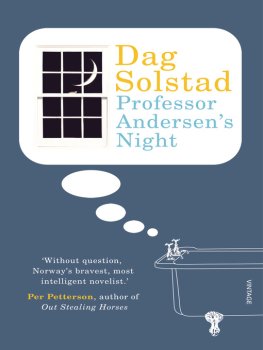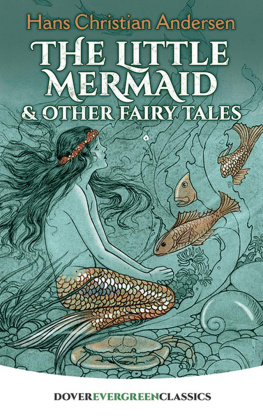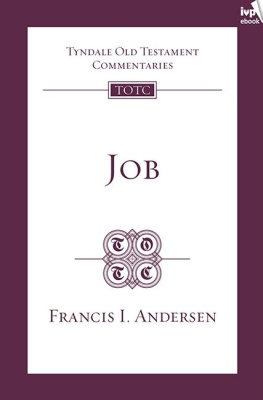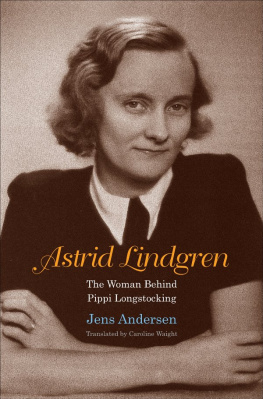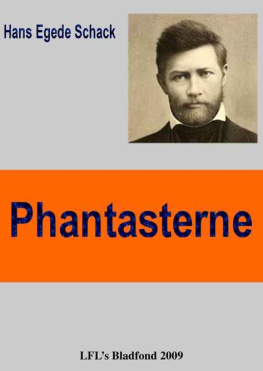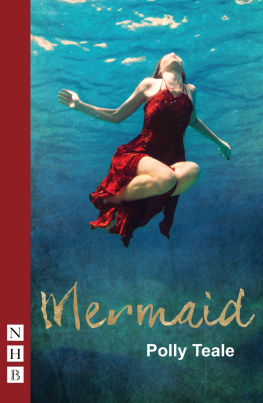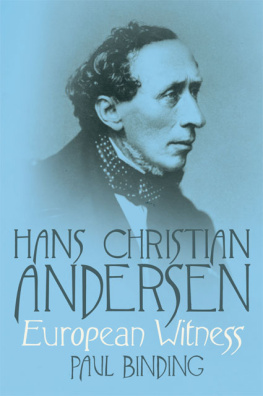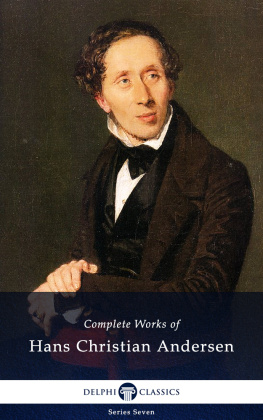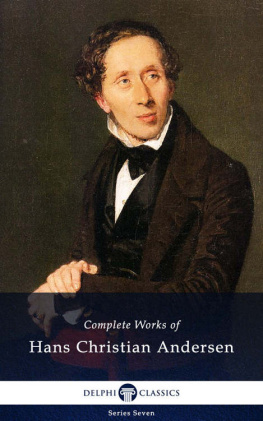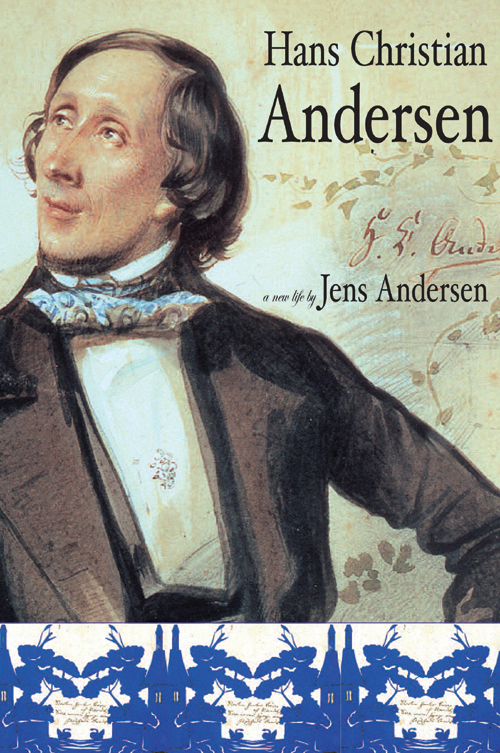First published in 2005 by
Overlook Duckworth, Peter Mayer Publishers, Inc.
New York, Woodstock & London
N EW Y ORK:
141 Wooster Street
New York, NY 10012
W OODSTOCK:
One Overlook Drive
Woodstock, NY 12498
www.overlookpress.com
[for individual orders, bulk and special sales, contact our Woodstock office]
L ONDON:
9093 Cowcross Street
London EC1M 6BF
inquiries @duckworth-publishers.co.uk
www.ducknet.co.uk
Copyright 2003 by Jens Andersen
English translation copyright 2005 by Tiina Nunnally
All rights reserved. No part of this publication may be reproduced or transmitted in any form or by any means, electronic or mechanical, including photocopy, recording, or any information storage and retrieval system now known or to be invented, without permission in writing from the publisher, except by a reviewer who wishes to quote brief passages in connection with a review written for inclusion in a magazine, newspaper, or broadcast.
ISBN 978-1-46830-547-0
Dear Reader, simply become a child again, yet do not forget everything you have read since you became a big, sensible person
H ANS C HRISTIAN A NDERSEN , Walking Tour, 1829
S INCE THIS BOOK IS INTENDED for English-speaking readers, the titles of all of Hans Christian Andersens works are presented in English, even though some may not be currently available in English translation. A list of the original Danish titles can be found at the end of the volume. All translations of passages from Andersens diaries, letters, and writings are my own, including quotes from his stories, most of which are cited from my translations in Fairy Tales by Hans Christian Andersen, published by Viking (2005). I am also responsible for the translations of other Danish and German passages included in the text.
Translating poetry is always a difficult task, and even more so if the poems are written with specific rhyme schemes. In this biography, Andersens poems are often used to illustrate aspects of his life and psyche. For this reason I felt it was important to stay as close to Andersens Danish as possible, which meant sacrificing the rhymes in favor of the content. Consequently the English translations, rendered in blank verse, may not do full justice to Hans Christian Andersen as a poet.
I would like to thank Jens Andersen for his willingness to answer my questions while I was translating his magnificent biography. I also received invaluable linguistic assistance from Steven T. Murray. And I am grateful to Editors David Mulrooney and Caroline Trefler, and Associate Publisher Tracy Carns at The Overlook Press for their continuing support of my work.
T INA N UNNALLY
Albuquerque, New Mexico
December 2004
I N A MODEST DISPLAY CASE at the Bakkehus Museum in Frederiksberg, a suburb of Copenhagen, there is a piece of paper on which Hans Christian Andersen describes in his nearly illegible script how he, at an early stage of his life, fortified his self-confidence and dream of fame by making a list of clever people whose names end in -sen. This list shows Andersens own name appearing as number three, after Marsk Stig Andersen and Jens Andersen Beldenak, the bishop of Odense.
The name Andersen was and is a terribly common name in Denmark, and thus an outward sign of anything but originality or noble ancestry. For a person such as Hans Christian Andersen, who at quite a young age was aware how different he was and fervently wished to put the social milieu of his childhood behind him, the name Andersen was also a stigma. It was a constant reminder of the reality and background from which it was impossible to escape, even though the writer tried to do so in many of his stories.
And yet he never forgot his connection with the common people, folk tales, or his childhood by the river out in Gods nature, to which the name Andersen had once given him access. This was the basis for all of his writing, his genius, and his distinctive character. Andersen never suppressed this profound truth, just as he never changed his name, and he regularly defended everything that was original in himself with great zeal. Any time one of his many mentors in the higher social circles would come too close to the folksy core he possessed by expressing critical admonitions, the instinctual reply from the man and the poet was always: Take me as I am! And if anyone entered into a conversation with him and questioned this edict, his answer was always (even in the years when he was utterly dependent on the goodwill and charity of the upper class): Its against my nature to be any different than I am.
The purpose of this book is to depict Hans Christian Andersen as he was. As a human being, a man, and a writer. Ever since Andersens death in 1875, an immense amount has been written about his life and work. Many of the assertions with which weve grown up, which have been used for generations to evaluate Andersen, are based on a number of myths that the author himself helped to devise and perpetuate, partially to create a romantic distance to his true background, as mirrored in his last name.
In this book I will attempt a thorough investigation of these myths. Not to expose Andersen as a liar, but rather to understand the forces he was up against, both internal and external.
Some readers may be offended by the fact that in specific sections of the book I closely examine Andersens puzzling sexuality, which even in our enlightened and emancipated times may seem bizarre or downright abnormal to certain people. Let me say that my intention here is not to pull Andersen down from his pedestal or to point fingers or to cause a sensation. Enough of that has already been done in regard to Andersen. Instead, Ive tried to take him as he was, showing respect for all the multiplicities and caprices of human nature. This was something that Andersen himself supported, and which he expressed in his travel book Shadow Pictures from 1831, when he went out into the world for the first time and encountered humanity:
Since no leaf on a tree is a copy of another, should a human being, in all his naturalness, be a copy?
Even though a life most often begins with a scream and ends with a sigh, I have chosen to organize my story of Andersens life in such a way that it begins with the date that he fondly called his birthday: September 6, 1819. That was the day when he, at the age of fourteen, arrived in Copenhagen and when, as he said, the fairy tale of his life began. The reader will have to wait to hear about the authors childhood until Chapter Seven, which concerns the 1840s, when Andersen decided for the first time to make public a detailed account of his childhood. This occurred in his 1847 autobiography The True Story of My Life, which was first published in German and became the basis for The Fairy Tale of My Life in 1855.
Chapter Ten, which is the last chapter of my book, gathers up all the important threads of Andersens life and work that are addressed in the previous chapters. It includes topics such as his relationship to art, to love and to both sexes, to faith and science and nature, and to the child within.
Hans Christian Andersen was tremendously aware of the educational trends of his day. This was especially true because in the 1820s he was enrolled in a school and subjected to an extensive, intellectual learning process in which his ungovernable emotions were constantly subordinated to the demand for reason and self-discipline. He managed to survive this culture shock too, and he actually learned a great deal. Quite prophetically, he wrote in one of his essay books from that period: Free and purethe way we imagine an angelis how a human being starts out on his lifes path; but things become strangely linked together; everything is involved in an eternal struggle and ferment.




